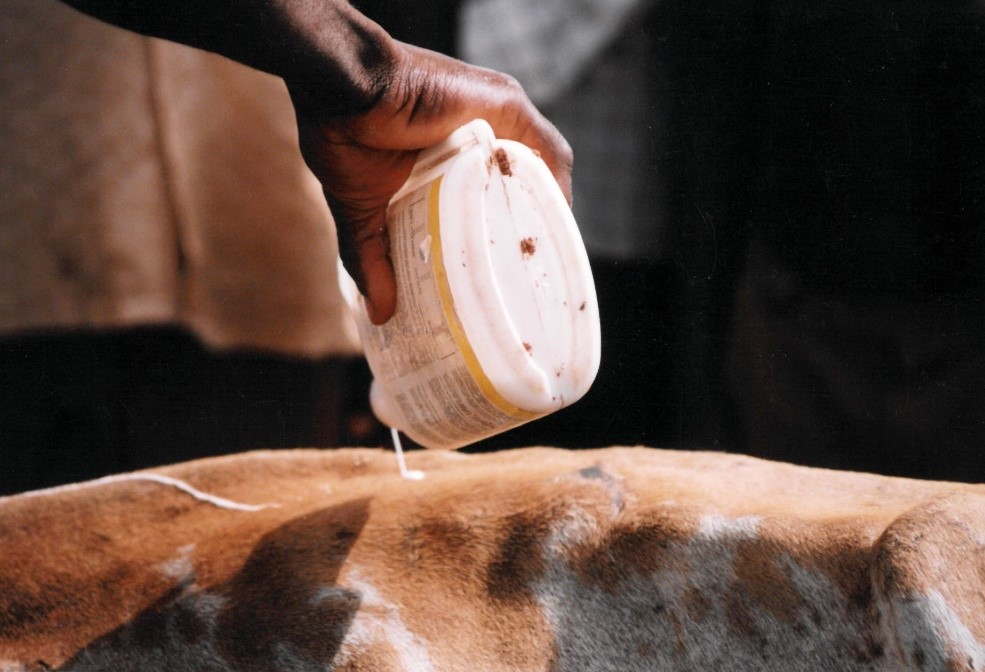
The World Organisation for Animal Health (WOAH) through the Antimicrobial Resistance – Multi- Partner Trust Fund (AMR-MPTF) project for Zimbabwe supported the Directorate of Veterinary Services (DVS) in Zimbabwe to develop a vaccine for the deadly cattle disease, Theileriosis, popularly known as January Disease.
The AMR-MPTF was established, given the transnational and multi-sectoral nature of AMR and the support requested from countries and other stakeholders, the Tripartite – a long-standing partnership between the Food and Agriculture Organization of the United Nations (FAO), the World Organisation for Animal Health (WOAH) and the World Health Organization (WHO) – is scaling up existing efforts to support countries to urgently counter this immediate threat through a One Health approach.
In Zimbabwe, the AMR-MPTF project was approved in June 2021. The project was officially launched in December 2021 and has been supported, as far as the animal health component is concerned, with financial, logistical and technical support.
Theileriosis is one of the four major tick-borne disease in Zimbabwe namely Anaplasmosis (gallsickness), Babesiosis (redwater), Theileriosis (January disease) and Heartwater and the production of the vaccine is a breakthrough for the animal health sector in the country.
While giving his remarks to a local news agency, the Directorate of Veterinary Services (DVS) Chief Director Dr Josaphat Nyika (and WOAH Delegate for Zimbabwe) highlighted that the initial 20,000 doses produced signified a successful breakthrough after several years of hard work. Although the quantities are modest, the first batch will be prioritised for the disease hotspots.
On his part, Dr Pious Makaya, Director of the Division of Veterinary Technical Services, at the DVS in Zimbabwe, who oversees the vaccine production, hailed the event as : “…the resuscitation of the Theileriosis vaccine (BOLVAC), by the Central Veterinary Laboratory of the Department of Veterinary Technical Services (DVTS), Directorate of Veterinary Services, Zimbabwe”.
The Theileriosis vaccine called BOLVAC was first produced by Zimbabwe’s Central Veterinary Laboratory (CVL) in 1989 using Zimbabwe’s own Theileria parva vaccine strain, isolated from Boleni Farm in Goromonzi district, hence the name BOLVAC vaccine. Production of the BOLVAC vaccine was gradually discontinued in the late 1990s mainly due to high technical staff turnover and inadequate financing.
After receiving financial support for training in Theileriosis vaccine production and for the purchasing of equipment and reagents by the Government of Zimbabwe, the AMR-MPTF Project (FAO and WOAH), and the Directorate of Veterinary Services (DVS) through its Department of Veterinary Technical Services (DVTS)’s Central Veterinary Laboratory, made a breakthrough and resumed production of the Theileriosis BOLVAC vaccine. The CVL managed to produce the first batch of 20,460 doses on the 20 of August 2022. This is the first batch towards meeting DVTS’s annual target of producing 100,000 doses of BOLVAC vaccine by the end of 2022. In addition to BOLVAC, the CVL has capacity to produce two (2) more tick-borne disease vaccines against Anaplasmosis and Babesiosis.
The resumption of BOLVAC vaccine production is a major breakthrough because Zimbabwe can now produce vaccines against three (3) out of the four (4) major tick-borne diseases (TBDs) prevalent in the country. With this production capacity, the country is now ready to roll-out its Integrated Ticks and Tick-Borne Disease Control Strategy (ITTBDCS) composed of three (3) main components namely dipping, Acaricide Resistance Monitoring and the use of TBD vaccines.
Pious Makaya
WOAH will continue supporting Zimbabwe through the AMR-MPTF project in the promotion of use of vaccines as an alternative to irrational use of antibiotics for Theileriosis in cattle.
In addition, in collaboration with the Medicinal Control Authority of Zimbabwe (MCAZ), WOAH supports the conducting of supply chain mapping of legal medicinal products to gain understanding of distribution pathways of veterinary medicines. Additionally, supply chain mapping will be performed for illegal medicinal products’ distribution to mitigate the risk and combat illegal cross border trade and trade in falsified and substandard medicines.
Dr Pious Makaya, Director – Division of veterinary technical services, Zimbabwe. Picture (c) M. Sirdar (WOAH ) 2022.



